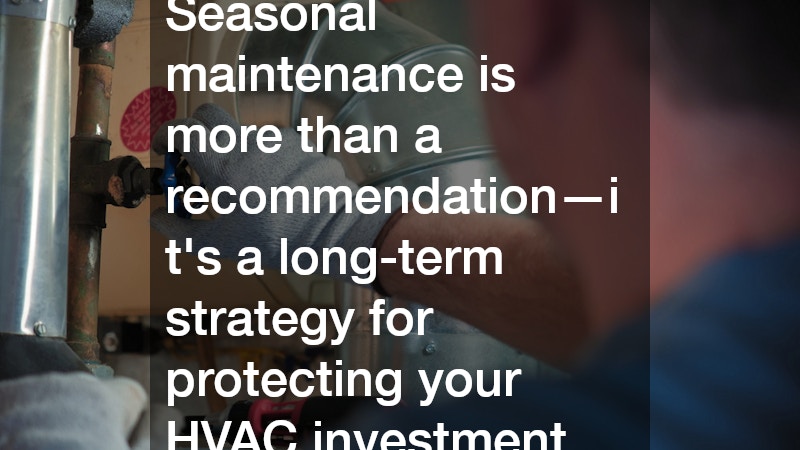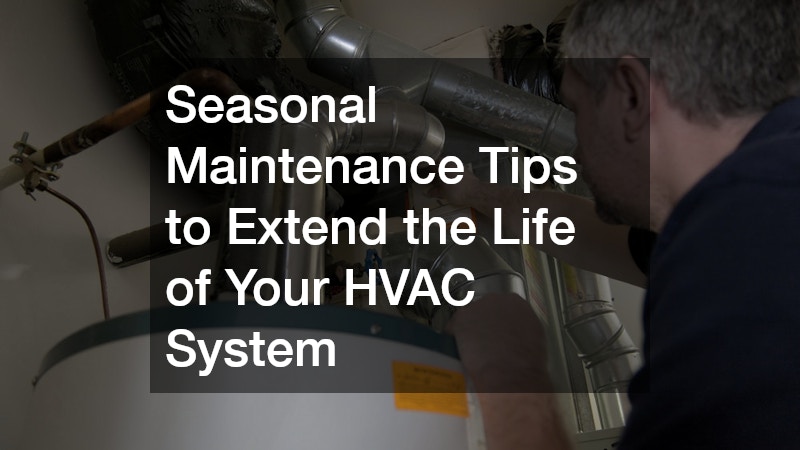Proper seasonal maintenance is vital to keeping your HVAC system running efficiently and extending its lifespan. Whether you’ve recently completed an HVAC installation or are managing an older system, routine upkeep is key to avoiding unexpected breakdowns and ensuring year-round comfort. This guide explores essential maintenance tips, answers common questions, and highlights what to consider when hiring professional help.
How Often Should HVAC Systems Be Serviced?
Routine servicing is essential to preserving your system’s efficiency. A well-maintained HVAC unit operates more effectively, consumes less energy, and experiences fewer breakdowns.
Regular maintenance not only helps prevent costly repairs but also supports healthier indoor air quality by reducing dust, allergens, and other contaminants circulating through your home.For most homes, servicing your HVAC system twice a year—once in the spring and again in the fall—is the industry standard. Spring maintenance ensures your air conditioning is ready for the summer heat, while fall servicing prepares the heating components for the colder months. These tune-ups are especially important after a new HVAC installation, as early care can help maximize your investment from the start. Even with regular servicing, problems can arise. Watch for warning signs such as strange noises, weak airflow, unusual odors, or inconsistent temperatures throughout the home. If your energy bills spike unexpectedly, your HVAC system may be working harder than necessary due to a malfunction or buildup. These indicators mean it’s time to call in a professional immediately.
What Are Key Seasonal Maintenance Tips for HVAC Systems?
As the weather warms up, your system shifts into cooling mode. Start by clearing debris from the outdoor condenser unit to ensure airflow. Replace or clean air filters every one to three months, depending on usage and indoor air quality needs. Checking refrigerant levels is also important, as low levels can decrease efficiency and cause damage over time. Heading into colder months, focus on heating components. Clean heat exchangers and inspect burners, pilot lights, and ignition systems for safe operation. Sealing ducts and insulating exposed lines help retain heat and reduce strain on your unit. If your HVAC installation includes a gas furnace, checking for carbon monoxide leaks is also critical for safety. No matter the season, some maintenance tasks should be ongoing. Keep both indoor and outdoor units free of dust, leaves, and clutter. Check thermostat settings periodically and replace batteries if needed. Inspect electrical connections and tighten loose wires to prevent malfunctions. These small tasks help maintain system reliability between seasonal check-ups.
How to Choose the Right HVAC Installation Service
When it’s time for a new HVAC installation or you’re seeking routine service, choosing the right provider matters. Look for companies with strong online reviews and recommendations. Verify that they are licensed, insured, and compliant with industry standards. Reputable service providers will also offer clear and transparent estimates before beginning any work. Before signing any agreement, carefully review service contracts. Good providers offer warranties on both labor and parts, giving you peace of mind if something goes wrong. Ask whether routine maintenance visits are included and whether emergency support is available. A reliable maintenance contract can protect your system and simplify long-term care. HVAC systems can vary significantly in design and technology. Make sure the technicians you hire are trained to handle your specific unit, whether it’s a heat pump, split system, or high-efficiency model. Experience with local climate considerations is also beneficial, as it ensures the contractor understands how seasonal extremes impact system performance.
What Are the Benefits of Professional HVAC Maintenance?
Professionals can detect and address issues that might be missed by the average homeowner. This level of attention ensures your system operates at peak efficiency, leading to lower energy use and reduced monthly utility bills. Clean coils, calibrated thermostats, and properly lubricated components all contribute to smoother operation. Like any mechanical system, HVAC units wear down over time. Regular check-ups help slow this process by identifying minor issues before they become serious. If your HVAC installation is fairly new, proactive maintenance will help preserve your warranty and ensure the equipment reaches or even exceeds its expected service life. A properly maintained HVAC system distributes air more evenly, eliminating hot or cold spots throughout the house. It also filters out pollutants, improving overall indoor air quality. This can be particularly beneficial for households with pets, allergies, or respiratory concerns. Comfort isn’t just about temperature—it’s also about the quality of the air you breathe.
What Costs Are Involved in HVAC Maintenance and Installation?
Annual maintenance typically costs a few hundred dollars, depending on the complexity of your system and the services included. This investment is minor compared to the cost of major repairs or system replacements, which can run into the thousands if left unaddressed. HVAC installation costs vary based on factors like system type, home size, and the complexity of ductwork. On average, a new installation might cost between $5,000 and $12,000. While it’s a significant investment, the long-term energy savings and comfort benefits make it worthwhile when professionally managed. Preventative maintenance is a smart financial decision. It helps avoid emergency service calls, extends the life of your equipment, and ensures your system runs as efficiently as possible. In many cases, homeowners recoup the cost of maintenance through reduced utility bills and fewer repair expenses over time.
Seasonal maintenance is more than a recommendation—it’s a long-term strategy for protecting your HVAC investment. Whether you’ve had a recent HVAC installation or are working with an older unit, regular check-ups can improve performance, reduce costs, and ensure your comfort throughout the year. By partnering with experienced professionals and committing to a consistent maintenance schedule, homeowners can enjoy reliable climate control for years to come.

